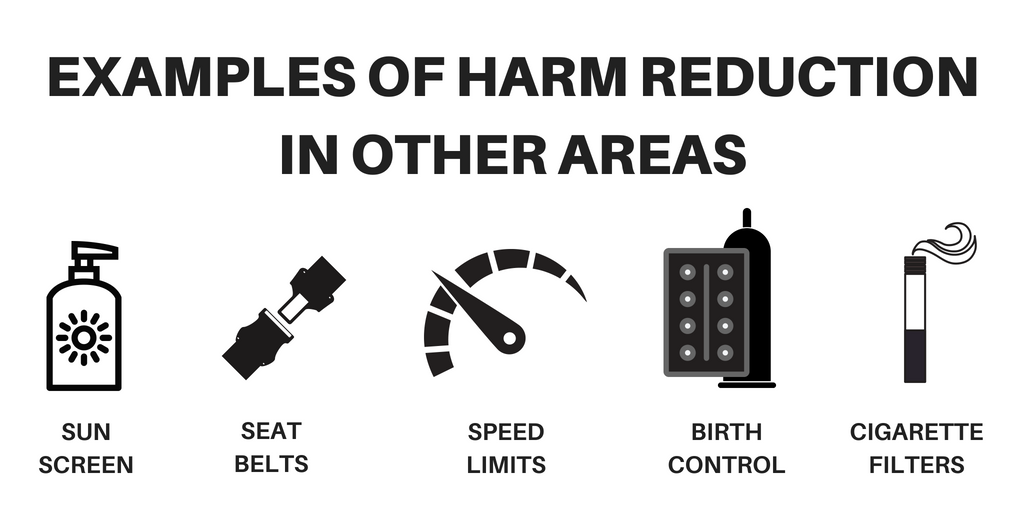Harm reduction, generally, looks to reduce the risks associated with activities that people enjoy or participate in. In the context of drug use, harm reduction is a set of practical strategies aimed at reducing the negative consequences associated with drug use.
Harm reduction is not new. Some well-known examples of harm reduction in public health settings include seat belts, sunblock, condoms and speed limits, among many others. Harm reduction as a prevention strategy is evidenced-based and effective.

Harm reduction in the context of drug use includes a continuum of strategies that range from safer techniques (like not using alone or having Narcan available) to abstinence. Harm reduction works to promote positive change in a non-judgmental way and recognizes the humanity, dignity and worth of every community member, whether they use drugs or not.
One of the goals of a harm reduction approach is to reduce stigma by:
- Offering compassionate support;
- Displaying kindness to people in vulnerable situations;
- Seeing people for who they are and not the drugs they use;
- Treating people with dignity and respect; and
- Avoiding hurtful labels (addict, junkie, etc.)
By reducing stigma and treating people with dignity and respect we hope to:
- Reduce fear, shame and burdens;
- Increase confidence;
- Build trust; and
- Increase the likelihood that someone will reach out for help when they are ready
Some of the key principles of harm reduction are:
- Health and dignity: Establishes quality of individual and community life and well-being as the criteria for successful interventions and policies.
- Participant autonomy: Affirms people who use drugs as the experts in their own lives and as the primary agents of change, and seeks to empower participants to share information and support each other.
- Sociocultural factors: Recognizes various social inequalities (discrimination, social determinants of health, access to resources and supports, etc.) affect both people’s vulnerability to and capacity for effectively dealing with potential harm.
- Pragmatic and realistic: Does not attempt to minimize or ignore the real and tragic harm and danger associated with drug use.
You can learn more about the principles of harm reduction here. Know Overdose Nevada County partners also provide training on harm reduction, stigma, Narcan and fentanyl test strips and overdose prevention.



